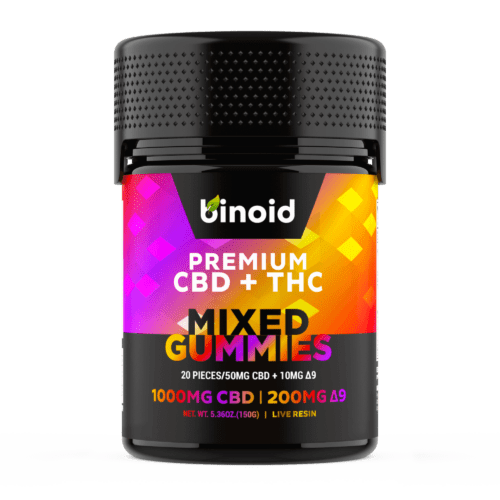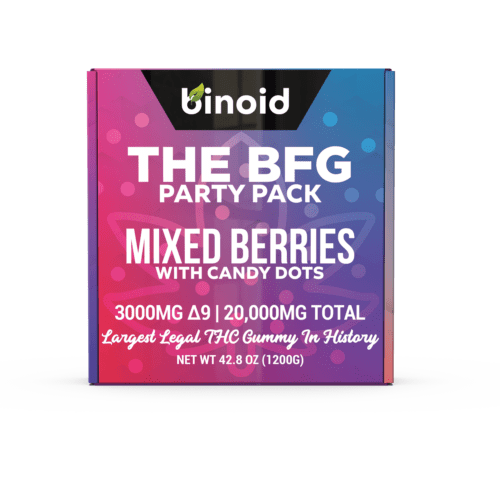
How To Spot Fake THC Seltzers
The crisp hiss as you crack open a cold can, the gentle fizz of bubbles rising to the surface, and the promise of a smooth, euphoric journey—THC seltzers have redefined what it means to enjoy cannabis. In a few short years, they have exploded from a niche novelty into a vibrant cornerstone of modern cannabis culture, offering a sophisticated and sessionable alternative to both alcohol and traditional consumption methods.
This sparkling revolution has attracted a wave of brilliant creators dedicated to perfecting the art of the infused beverage. Yet, this bright and booming market has also cast a shadow, creating a space for imposters and low-grade imitators to peddle their wares. Distinguishing a premium, precisely crafted seltzer from a disappointing dud or a dangerous fake is the essential skill every modern consumer needs to ensure their experience is nothing short of exceptional.
To Buy THC Seltzers Click Here
Recommended products
What Exactly are THC Seltzers Anyways?
THC seltzers are essentially sparkling water beverages that have been infused with a measured amount of Tetrahydrocannabinol (THC) – the compound in cannabis primarily responsible for its psychoactive effects. These drinks come pre-made and packaged in cans, offering a convenient and discreet way to consume THC. At its core, THC interacts with the body’s endocannabinoid system (ECS). The ECS is a vast network of receptors that helps regulate functions like mood, sensation, and perception. When you drink a THC seltzer, the Tetrahydrocannabinol is absorbed through your digestive system, which means the onset of effects is more gradual than with inhalation.
This controlled and predictable dosing, clearly labeled on each can, is a significant part of the appeal, allowing individuals to tailor their experience with a degree of precision that is difficult to achieve with other forms of cannabis. The effects of THC seltzers are often described as a gentle, uplifting wave that brings on a state of relaxation and mild euphoria. Unlike the sometimes-intense rush that can come from other methods, the experience with seltzers tends to build slowly, typically taking anywhere from 30 to 90 minutes to fully manifest.
This slower, more manageable onset provides a sense of control, allowing users to ease into a chilled-out state of mind. Many people report feeling more present and engaged, with a heightened appreciation for their surroundings—music may sound richer, food may taste more flavorful, and conversations may feel more connected. The goal for many is not an overwhelming high, but a subtle enhancement of reality, fostering a lighthearted and blissful disposition perfect for a variety of settings.
The audience for THC Seltzers is broad and continues to grow, encompassing a wide range of adults looking for alternatives in their recreational beverage choices. They are particularly popular among those who are “canna-curious” but may be hesitant to smoke or vape, as the familiar format of a seltzer is far less intimidating. Health-conscious consumers are also drawn to them, appreciating that they are often low in calories and sugar, providing a way to unwind without the negative attributes commonly associated with alcohol. From the social butterfly seeking a way to stay engaged at a party to the individual looking for a peaceful companion during a creative endeavor or a quiet night at home, THC seltzers offer a versatile and modern option for adult enjoyment.
The Seltzer Spectrum: From Premium to Problematic
Before you can become a seltzer sleuth, it is crucial to understand that not all subpar products are created equal. The issues you might encounter exist on a spectrum, ranging from the merely disappointing to the genuinely dangerous. On one end, you have the fake or counterfeit seltzers, and on the other, the low-quality but technically legal options.
A fake THC seltzer is a product that exists completely outside of the regulated, legal marketplace. These are the illicit concoctions you might find at a gas station, an unlicensed smoke shop, or from a dubious online vendor. They often try to lure buyers by using flashy packaging that mimics popular, mainstream snack or candy brands, or by making absurd dosage claims that seem too good to be true. The primary danger of these products is the complete lack of oversight. There is no guarantee that the THC content on the label is accurate, and more alarmingly, they can contain harmful contaminants like pesticides, heavy metals, or mold. These are the products that pose a significant risk and must be avoided at all costs.
A low-quality THC seltzer, however, is a slightly different beast. This is a product that you might find in a licensed dispensary, but it simply doesn’t meet the standards of a well-crafted beverage. It is not necessarily unsafe, but it is a poor representation of what a THC seltzer can be. The cause is often corner-cutting in the production process: using cheaper, unrefined cannabis extracts, unstable emulsion techniques, or artificial, cloying sweeteners. The result is a seltzer with an unpleasant “weedy” aftertaste, an oily texture, weak carbonation, or sediment that settles at the bottom of the can. While it won’t harm you like a counterfeit product might, it will certainly harm your wallet and leave you with a deeply underwhelming experience.
Recommended products
Why the Bad Bubbles Exist and The Motive Behind Poor Quality
Understanding why these problematic THC seltzers are made in the first place is key to appreciating the importance of vigilance. Their existence is not an accident, but a calculated business decision driven by a few powerful factors.
The primary motivator, unsurprisingly, is the pursuit of higher profit margins. Crafting a superior THC seltzer is an expensive endeavor. It requires high-grade cannabis distillate, sophisticated Nanoemulsion technology, quality natural flavors, and, most importantly, rigorous third-party lab testing. Illicit producers bypass every single one of these costs. They use cheap, crude cannabis extract that carries a bitter taste, which they then try to mask with overwhelming amounts of artificial sweeteners. They completely skip the expensive lab testing regimen—which can cost hundreds of dollars per batch—pocketing the savings while passing all the risk to the consumer. Furthermore, by operating in the black market, they avoid the hefty taxes and licensing fees that legal operators pay, allowing them to undercut the prices of legitimate, safe products.
These shady operators also prey on the enthusiasm and knowledge gap of consumers new to the world of cannabis beverages. A first-time buyer might not know to look for a QR code or understand the red flags of counterfeit packaging. They might be tempted by a lower price or flashy, familiar-looking branding, unaware of the potential pitfalls. This creates a market for low-grade products that can only survive by deceiving or taking advantage of the uninformed.
Recommended products
The Label as Your Ledger: Decoding the Can
The most powerful tool at your disposal is the information—or lack thereof—on the seltzer’s label. A reputable brand is proud of their product and will provide you with all the information you need to feel confident in your purchase. A shady operator will hide behind flashy designs and vague promises.
The QR Code: Your Non-Negotiable Key to Confidence
In today’s regulated cannabis market, the singular, undisputed symbol of legitimacy is a QR code on the packaging. This code should link directly to a product-specific Certificate of Analysis (CoA) from an accredited, third-party laboratory. If a THC seltzer does not have a functional QR code that leads to a CoA, it is an immediate and significant red flag. Do not purchase it. This code is the brand’s promise of transparency and your ultimate peace of mind.
Once you scan the code, you’ll be taken to the CoA. This document might look complex, but you are primarily looking for a few key sections:
Potency Analysis: This is where you confirm you are getting what you paid for. The report will show the exact concentration of cannabinoids. The THC and CBD content listed here should closely match what is advertised on the can. If a seltzer claims to have 5mg of THC, the CoA should verify this, usually within a 10-15% margin of variance.
Pesticide Screening: Cannabis is a bioaccumulator, meaning it can absorb chemicals from the soil and water it’s grown in. This is why a pesticide screening is critical. The CoA should show a clear “Pass” for a long list of specific pesticides, or list the results as “ND” (None Detected) or “
Heavy Metals and Contaminants: The report must also show a “Pass” for heavy metals like lead, arsenic, and mercury, as well as for microbials like mold, yeast, and salmonella. This ensures the product is clean and safe for consumption.
Visual Red Flags on the Label
Beyond the QR code, the design and text on the label itself can tell you a lot.
Copyright Infringement: This is the most blatant sign of a fake THC seltzers product. If the seltzer’s branding uses logos, characters, or fonts from well-known mainstream brands (for example, a cannabis-themed take on a famous soda or candy), it is an illegal product. Legitimate companies create their own unique brand identities.
Outlandish Dosage Claims: The legal seltzer market generally offers doses between 2mg and 10mg of THC per serving. If you see a can claiming to contain 500mg or 1000mg of THC, it is almost certainly a fake. These numbers are a marketing gimmick designed to trick inexperienced users.
Typos and Poor-Quality Printing: A legitimate brand invests in professional design and high-quality printing. Labels with spelling mistakes, grammatical errors, blurry images, or faded colors are a clear indication of an unprofessional, and likely untrustworthy, operation.
Recommended products
The Brand Behind the Bubbles: Vetting the Company
In the modern market, a company’s reputation is paramount. A little bit of research before you buy can save you from a world of disappointment.
Start with a quick online search of the brand name. A trustworthy company will have a professional website that provides clear information about their products, their mission, and their contact details. Their social media presence should be polished and professional. If a brand has a non-existent or amateurish online footprint, it’s a reason to be skeptical.
Next, seek out independent reviews. While a company’s website will showcase glowing testimonials, you can find more honest feedback on community forums like Reddit. Search for the brand name in cannabis-related subreddits to see what real users are saying about the seltzer’s taste, effects, and overall quality.
Finally, and most importantly, only purchase THC seltzers from a state-licensed, legal dispensary or delivery service. This is the golden rule. Licensed retailers are legally required to sell products that have been tested and verified. If you are buying seltzers from a gas station, a convenience store, or an unlicensed “gift shop,” you are engaging with the illicit market, where none of the guarantees of quality or safety apply.
A Sensory Inspection: Trusting Your Eyes, Nose, and Palate
Once you’ve vetted the label and the brand and you have the can in your hand, your own senses are the final checkpoint. A high-quality THC seltzer should appeal to you from the moment you pour it.
The Look: Clarity and Consistency
Pour the seltzer into a clear glass. A well-made THC seltzer should be crystal clear or have a consistent, even haze if it’s an unfiltered fruit-flavored variety. The carbonation should be active and vibrant, with a steady stream of fine bubbles. Red flags to look for include:
Sediment or Floaters: There should never be visible particles or sediment settled at the bottom of the glass. This indicates a poor filtration process or that the ingredients have fallen out of solution.
Oily Sheen: Look closely at the surface of the seltzer. If you see an oily film or small oil droplets, it’s a definitive sign of a broken or unstable nanoemulsion. This means the cannabis oil has separated from the water, which will result in an unpleasant texture and inconsistent dosing.
Unnatural Colors: High-quality THC seltzers typically use natural flavorings and have a very light, natural tint or are completely clear. A seltzer with a bright, neon, or unnaturally vibrant color is likely using cheap, artificial coloring.
Recommended products
The Smell: Clean and Inviting
Give the THC seltzer a gentle sniff. The aroma should be clean, fresh, and representative of its advertised flavor. You should smell crisp lime, ripe raspberry, or zesty grapefruit. While some people enjoy the aroma of cannabis, a premium seltzer should have little to no “weedy,” “grassy,” or “swampy” smell. A strong cannabis odor is often a sign that a crude, unrefined extract was used instead of a purified distillate.
The Taste and Texture: The Ultimate Test
The final and most important test is the taste. A premium THC seltzer should be a delight to drink. The mouthfeel should be crisp and clean, not heavy or syrupy. The flavor should be balanced and refreshing, with the natural fruit or botanical notes shining through. Key warning signs of a low-quality seltzer include:
A Bitter or Chemical Aftertaste: This is the most common flaw. After you swallow, you shouldn’t be left with a harsh, bitter, or chemical-like flavor. This lingering bitterness is a tell-tale sign of a low-grade cannabis extract that hasn’t been properly purified.
Oily or Greasy Mouthfeel: The seltzer should feel like water, not oil. If it leaves a greasy film on your tongue or the roof of your mouth, the Nanoemulsion is of poor quality.
Overwhelming Sweetness: While some THC seltzers are lightly sweetened, an excessive, cloying sweetness is often used as a heavy-handed attempt to mask the unpleasant taste of a cheap extract. It should taste refreshing, not like a sugary soda.
Your Consumer Power is What Fosters a Market of THC Drink Quality
Navigating the world of THC seltzers is about more than just avoiding a bad product; it’s about actively participating in the creation of a better market. Every time you scrutinize a label, check for a CoA, and choose to purchase from a reputable, licensed source, you are casting a vote for quality, safety, and transparency. This consumer diligence rewards the passionate creators who are dedicated to their craft and marginalizes those who seek to profit from deception. Your informed choice is the most powerful force in ensuring that the future of this exciting beverage category remains sparkling, safe, and truly exceptional.







